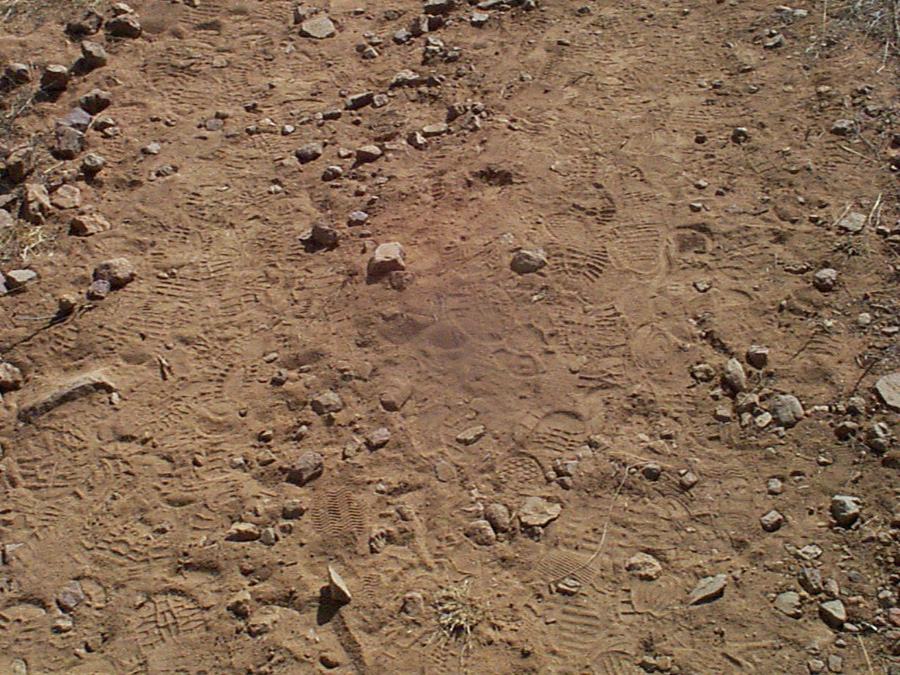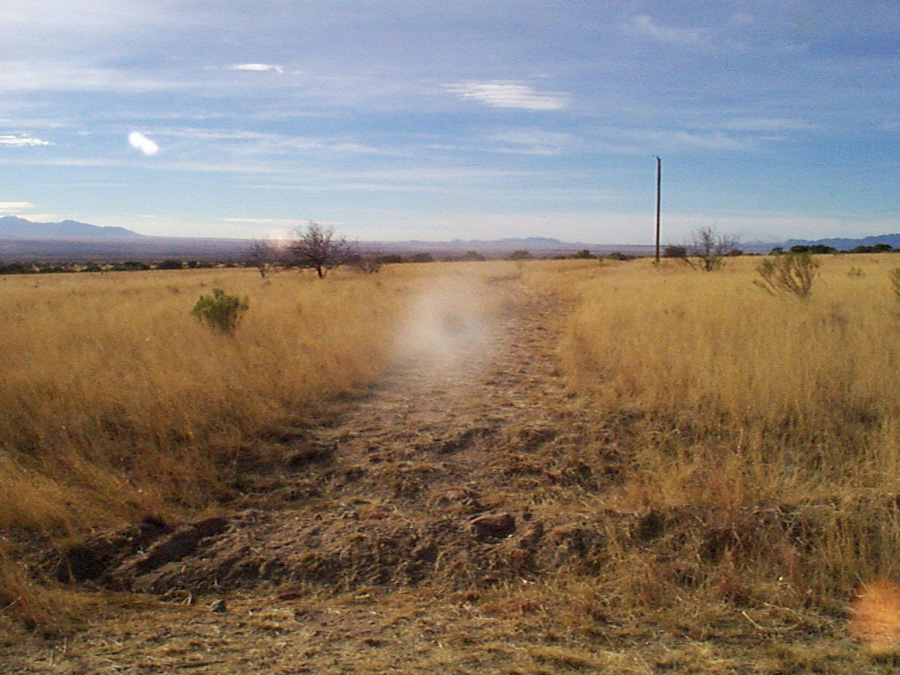Basic Tracking
Home
Deming Station
History
New Mexico
Duties
AirOps
Fences
Odds & Ends
Tracking
Basic Techniques
Trail #1
Trail#2
Drug Interdiction
Seizures
Compartments
Teamwork
Alien Smuggling
Staging Areas
Into the Interior
Border Patrol Art
Safeguard 1999
Message Board
A trail begins when tracks or sign of someone passing are located in the desert. A normal search for tracks begins on or along roads that are maintained by the agents. This is accomplished by pulling tires behind the vehicle which makes a smooth surface so footprints (tracks) can be easily seen. Undocumented aliens don't always cooperate in making this an easy task for the agents. They will try to "brush out" their sign, walk backwards, wrap their feet in carpet and use a number of other ploys to make tracking more difficult.
The agent will try to "age" the sign that he/she has located. There is a wide variety of ways that this can be accomplished.
A) Weathering: The effect that the weather has had on the tracks. Rain drops and wind will help narrow down the time they crossed the road. The detail of the tracks will diminish over time giving them a faded appearance.
B) Time of travel: The agent can try to determine the time of travel such as walking in daylight or during the hours of darkness (phases of the moon must also be taken into account). The tracks may walk up to a bush eventhough a more direct route is visible. This may indicate the subjects are walking at night. Lights provide a beacon for the walkers to guide on at night. These locations are usually known to the agents and can be checked to see if the aliens have reached their destination.
C) Animal sign: Animals can be help or hindrance in this process. Most desert animals move around at night, if it's 5 o'clock in the afternoon and you have a lot of animal sign in your trail, it may not be very fresh.

